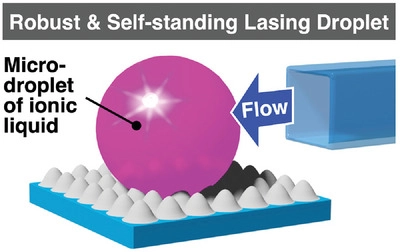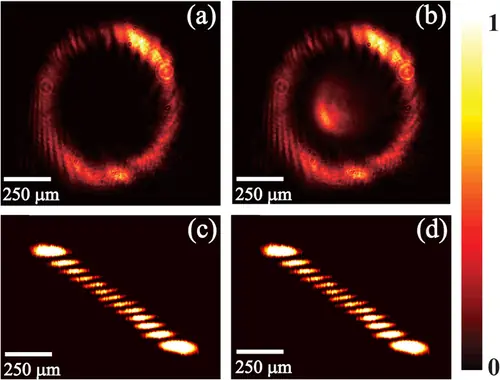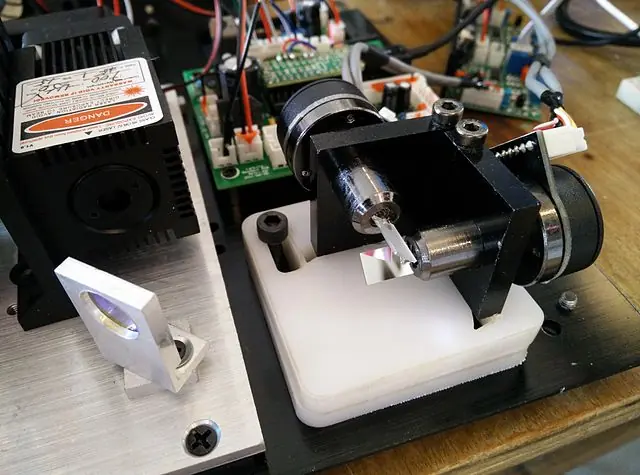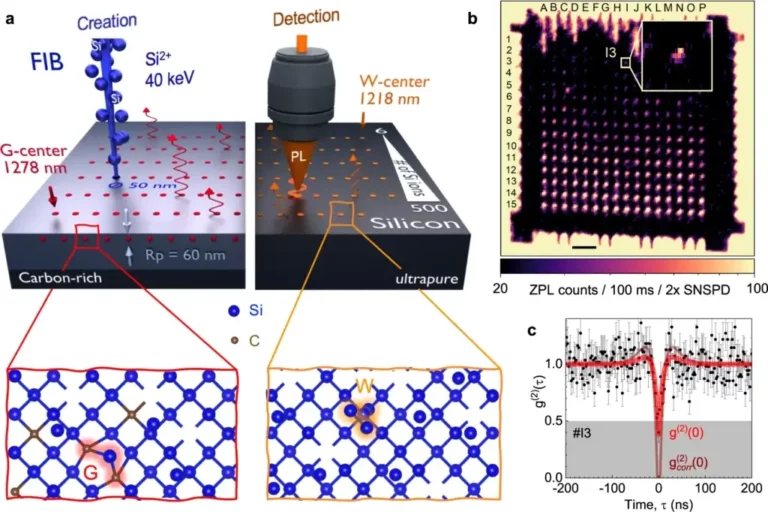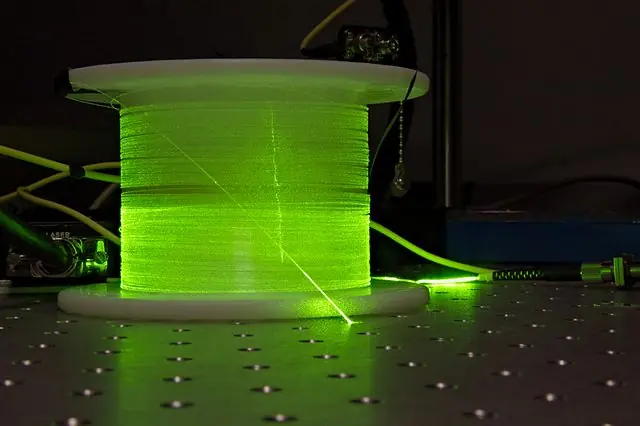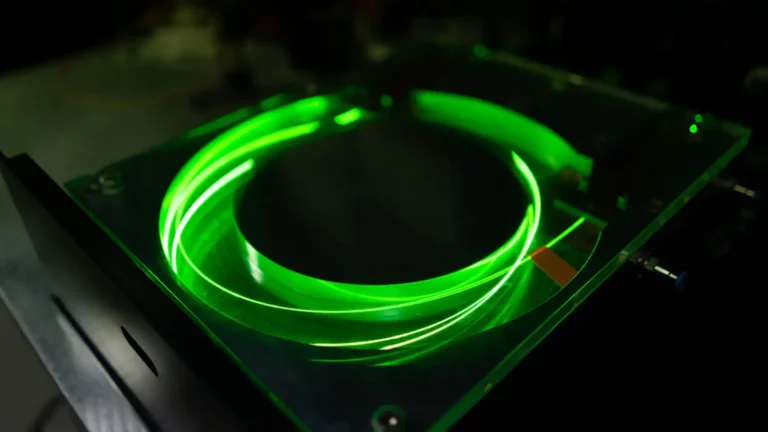Dynamic Optical Beam-Steering of a Liquid Crystal Laser: A Breakthrough in Compact Design
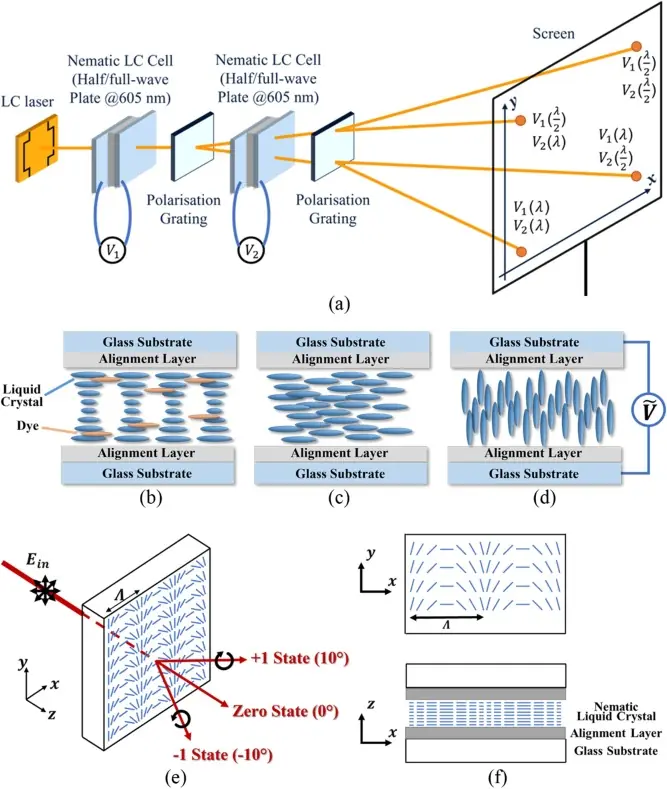
The development of laser technology has led to numerous applications, ranging from communication to navigation and even in remote sensing technology. However, there is a growing need for compact and efficient beam-steering systems, especially in applications where the laser source needs to be moved in different directions. There have been various attempts to steer laser beams using mechanical methods, however, these methods can be slow and can result in a change in the laser properties, such as wavelength and intensity.
In this study, a new method of dynamic optical beam-steering is presented. The method is based on the use of a chiral nematic liquid crystal (LC) laser, where the beam is steered by exploiting the circular polarisation of the LC laser in combination with tuneable nematic LC phase shifters and fixed polarisation gratings. The results show that the beam can be effectively steered to four different discrete spatial positions.
The whole system, except for the solid-state pump source, is comprised of thin films that are either liquid crystalline or polymers. This offers a promising solution for a more compact and integrated optically steerable LC laser. Furthermore, the LC-polymer-based configuration and dynamic electrical control provide a simple and efficient way of controlling the beam direction.
One of the key advantages of this method of beam-steering is that it does not result in a change in the laser wavelength and has a minimal impact on the intensity of the laser emission. This is in contrast to other approaches where the change in the laser properties can affect the performance of the beam-steering system.
The technique developed in this study also allows for the simulation of imperfections in the polarisation grating structure. The simulations match the experimental results and measurements, providing a deeper understanding of the beam-steering mechanism.
The combination of the all-LC system, including the LC laser, tuneable LC waveplates, and LC polarisation gratings, offers a compact and efficient solution that could be used in optical communications, navigation, and tracking, as well as LiDAR applications.
In conclusion, the dynamic optical beam-steering of a band-edge chiral nematic LC laser demonstrated in this study provides a promising solution for a compact and efficient beam-steering system. The method does not result in any changes to the laser wavelength and intensity, and the LC-polymer-based configuration and dynamic electrical control provide a simple and effective way of controlling the beam direction. The findings of this study are expected to have a significant impact on the development of compact and efficient beam-steering systems for various laser applications.

